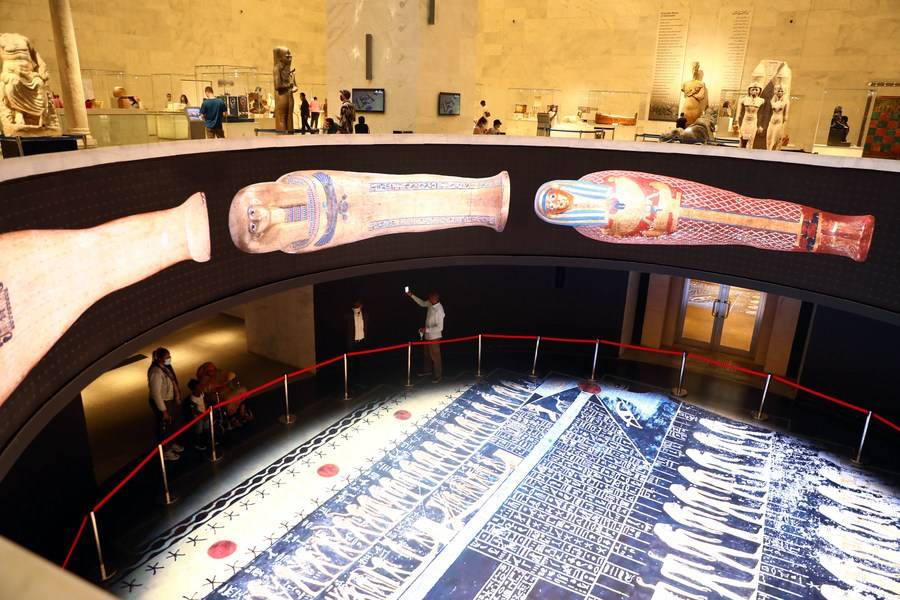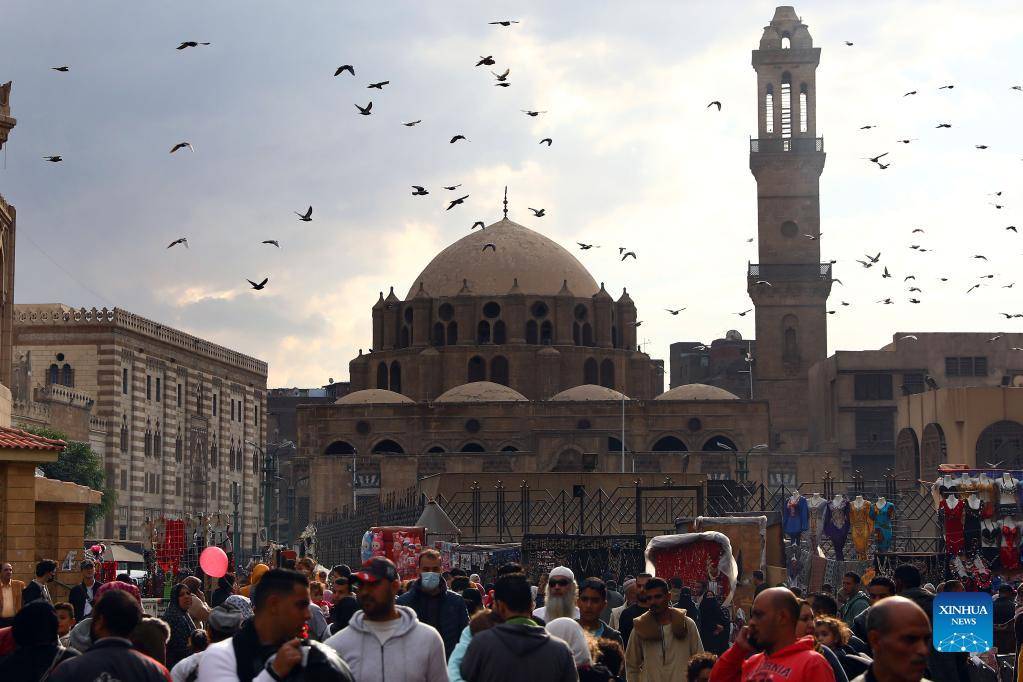Egypt seeks to advertise astronomical tourism to attract more tourists … a special report by Marwa Yahya and Ahmed al-Afyouni
In a unique astronomical phenomenon, the sun illuminated six ancient temples on Tuesday in five provinces across Egypt, signaling the summer solstice, the longest day of the year.
Marking the first day of the summer in the ancient Egyptian calendar, the sun falls perpendicular to the sacred rooms in the temples of Ramses III and Ptah in Karnak complex in Luxor, Dendera in Qena, Edfu in Aswan, Hibis in New Valley, and Abydos in Sohag.
Inside the Dendera temple, the sun penetrated at 11:30 a.m. local time the ceiling openings of the temple and stayed on the Quds el-Aqdas (Holy of Holies) of Hathor, the goddess of the sky, women, fertility, and love.
“The phenomenon which is repeated on June 21 every year is one of the attractions for tourists,” Abdel Hakeem al-Saghir, chairman of Dendera Temple complex, told Xinhua.
Illuminating goddess Hathor by the sun rays reflected how the ancient engineers were genius in construction, building, and astronomical calculations, he added.
The summer solstice was especially important in ancient Egypt because it heralded the coming of Sirius, the brightest star in the night sky. Shortly after Sirius arrived each year, the Nile River would overflow its banks and the flood season would begin, which the Egyptians relied on to nourish the land.
Al-Saghir explained that building religious facilities in ancient Egypt began with observing the stars to determine the right direction for worshipping in the temples.
Listening to the explanation from her tour guide, Claudia Peter, a tourist from England, was fascinated by the phenomenon.
“This is a true miracle that I have never seen anywhere else. The science of physics and astronomy was highly progressed in Egypt,” she said, adding “this phenomenon adds a new angle to my understanding of ancient history.”
Mohamed Abdel-Hameed, a researcher in Egyptology, said that “astronomical tourism has become famous in Egypt and many tourists come from all over the world to see the spectacular phenomenon.”
He called on the tourist travel agencies to add the dates of the astronomical phenomenon on the tourist maps, adding that 22 similar events take place in Egypt’s temples every year, some of them marking the birthdays of ancient famous kings and some marking the winter solstice.
Meanwhile, Ayman Abu al-Yazid, chairman of the Egyptian Association for Tourism and Antiquities Development, said that the ancient Egyptians were famous for the science of astronomy and they succeeded in dividing the day into 24 hours and the year into four seasons via observation of the stars’ movements.
Building the temples and the holy places in the proper direction had an important role in ancient Egyptians’ religious life, al-Yazid told Xinhua.
All the temples were built either to the sunrise or the sunset on certain days and with certain indications as appeared in religious texts, he added, noting that the sun symbolizes life and resurrection for ancient Egyptians.
ALSO READ:Aswan Forum kicks off in Cairo
Al-Yazid said Egypt seeks to advertise those events for attracting tourists. Tourism, Egypt’s third-largest source of national income, was the sector most adversely impacted by the spread of COVID-19, as the number of tourists visiting Egypt in 2020 was reduced to 3.7 million, compared to 13.1 million in the previous year.
In 2021, tourism saw a steady recovery, as 3.5 million tourists visited the country in the first six months. However, the number of holidaymakers declined again on the heel of the Ukrainian-Russian conflict.
Tourism used to account for up to 15 percent of the GDP in Egypt before the outbreak of COVID-19 in early 2020, according to official statistics.
On Monday, Egypt’s Minister of Finance Mohamed Maait said the country had lost 23.4 billion U.S. dollars over the past two years due to the COVID-19 pandemic and the Russian-Ukrainian conflict.
Maait emphasized that many sectors, tourism and civil aviation in particular, suffered significant losses.














